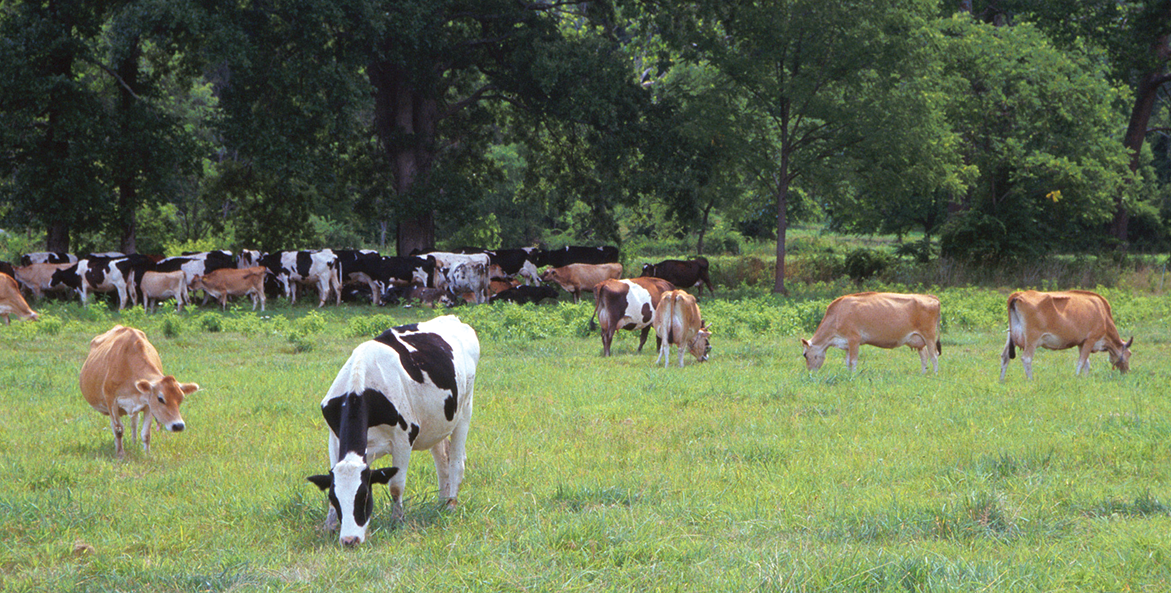The most significant legislation to fight climate change ever, just signed into law by President Biden, is also a major win for Bay restoration. But there's an important part of the Inflation Reduction Act that hasn't made headlines: It includes $20 billion to fund climate-smart farm conservation practices that could help a lot more farmers do their part to save the Bay and its tributaries.
That's because the same farming practices that store carbon also improve water quality. Cleaner water upstream in the rivers and streams that empty into the Bay means a healthier, more productive Chesapeake Bay downstream.
The key is in the soil, literally.
Healthy soils build organic material, sequestering climate-warming carbon emissions in the process. Healthy soils also hold more water, which bolsters land's resilience to extreme droughts and storms exacerbated by climate change.
Healthy soils make economic sense too. Farmers save money on costs like fertilizer and livestock feed. They can also charge more for the higher quality of crops, dairy products, and meat they get from healthy soils and the grass they produce.
And by keeping excess nutrients and sediment out of nearby rivers and streams, healthy soils promote clean water. This is important because farm runoff is the largest source of Bay pollution. It is also the pollution source where Bay restoration efforts are furthest behind.
Bay states have less than four years to meet their pollution-reduction commitments under the Chesapeake Clean Water Blueprint. Roughly 90 percent of the remaining cuts must come from agriculture, primarily in Pennsylvania.
Stewardship practices that can close that gap include planting forested buffers along streams and cover crops on empty fields. This keeps vital nutrients in the soil and out of waterways. Another is raising livestock on pasture instead of grain and rotating the pastures where livestock graze. Perennial pastures sequester carbon, and moving animals frequently allows plants to recover from grazing, improving soil and forage quality.
The U.S. Department of Agriculture (USDA) encourages these practices through programs that share project costs and provide technical expertise to farmers. The $20 billion boost will benefit the Environmental Quality Incentives Program (EQIP), the Regional Conservation Partnership Plan (RCPP), the Conservation Stewardship Program (CSP), the Agriculture Conservation Easement Program, and technical assistance and outreach to farmers.
Of course, the $20 billion can only help if USDA directs a sizeable chunk to the watershed, especially in Pennsylvania. Pennsylvania has more than 30,000 farms in the region and has by far the most work left to do. Yet Keystone State farmers are being shut out of these programs. In 2020, only 20 percent of EQIP applications from Pennsylvania farmers and 27 percent of their CSP applications succeeded.
Fortunately, USDA can use the framework of its new Chesapeake Bay States' Partnership Initiative to prioritize Bay farmers at this critical moment.
USDA is an important player in the federal-state partnership to restore the Bay. With another $20 billion available for conservation practices that can help save the Bay and fight climate change, the department can afford to be a leader. CBF urges USDA to seize this opportunity.
Beth McGee, Ph.D., Director of Science and Agricultural Policy, CBF
Issues in this Post
Agriculture Climate Change Regenerative Agriculture Water Quality



